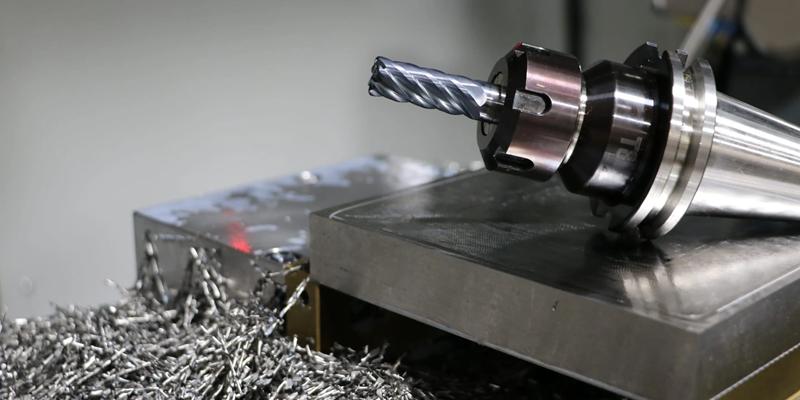- November 4, 2022
CNC milling is a highly versatile machining process that involves using rotating cutters to scrape out portions of a workpiece till the desired shape is achieved. The most common milling cutters are end mills, face mills, slab mills, fly cutters, etc.
Of all these cutting tools, end mills are distinct, with vast applications. They are unique milling tools specific to end milling processes. In this article, we will discuss extensively end milling operations. Let’s get right into it.
What is End Milling?
End milling involves using a specific cutting tool, an end mill, to make axial cuts into a workpiece. It is an aspect of milling operation used for special applications such as producing die cavities, profiles, slots, contours, shoulders, and other milling parts.
Like many cutting tools, end mills have many cutting teeth on the tips but extra cutting teeth on their peripheral sides. Consequently, they are suitable for end-cutting and peripheral cutting. These mill cutters can make exact cuts, making them practical for a wide range of applications, including engravings and the fabrication of machine parts.
When Choose Use an End Mill?
End milling has a couple of capabilities unavailable to many other machining processes. The end mills are relatively small tools suitable for making cuts with high precision for intricate metal work.
Below are typical operations that require end milling operations.
- Slotting
- Contouring
- Plunging
- Profile milling
- Traditional roughing
- Tracer milling, etc.
Different Categories of End Mills
End mills are categorized based on the shape, number of flutes, material type, etc. Let’s examine different types of end mills under this classification.
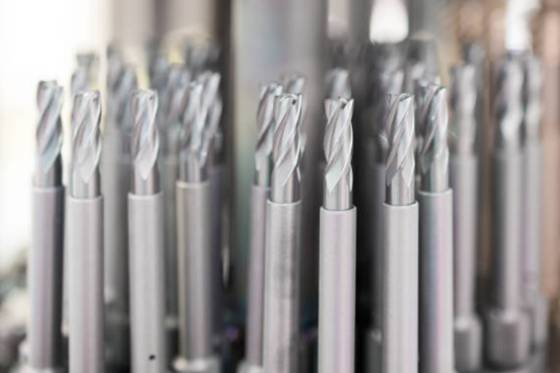
End Mills Type: Classification by Shape
Based on the shape of the shapes, end mills can be further classified into the following.
●V-bits: The cutting teeth are of small angles, usually 60° or 90° forming a V-shaped cutting end. This makes them suitable for making narrow and small cuts. They are also used in lettering, engraving intricate details, and making signs.
●Square-end mills: They are also known as flat-end mills. These mills have a sharp square corner, which makes them suitable for 90° cuts in the workpiece. They serve as general-purpose end mills used in face milling, side milling, etc.
●Ball end mills: These mills have a rounded cutting edge, which gives the workpiece an improved surface finish. They are suitable for milling contoured surfaces, shallow slotting, etc.
●Fishtail end mills: These mills have cutting teeth focused on one end, which is usually flat so that it can cut through any material, including thin sheets. It reduces the splintering of the workpieces and is suitable for making pockets with flat bottoms, plunge routing, precise contours, etc.
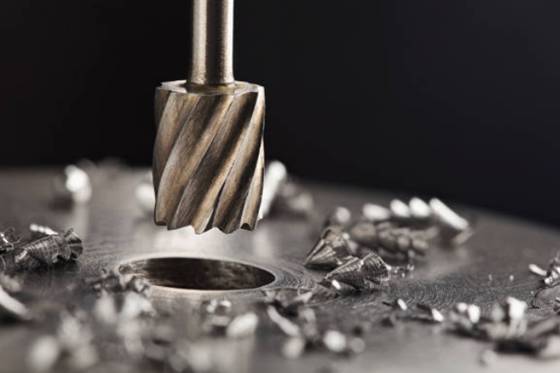
End Mills Type: Classification by Number of Flutes
The flutes are the spiral grooves on the cutting edge of end mills that allow chip formation removal during cutting. Typically, end mills have 2, 3, or 4 flute configurations, though the 3 flutes end mills are less common than the other two.
An increase in the number of flutes will cause an increased feed rate of the cutters and the production of cuts with better surface finish. However, reduced flutes denote better chip clearance and reduced heat build-up. Therefore, manufacturers may need to consider the material they are working on before deciding the kind of end mill to use for their fabrication.
●2 Flute End Mills are ideal for aluminum and wood because they are softer and produce larger chips.
●3 Flute End Mills have good chip removal and average resistance to wear and tear.
●4 Flute End Mills are best suited for cutting workpieces that are considered too hard to work with 2 flute cutters. Also, they are the more common types of end mills used in machine shops.
End Mills Type: Classification Based on Material
End mills are often manufactured with either cobalt steel alloys (High-Speed Steel) or tungsten carbide. Another option is the cobalt end mills.
●High-Speed Steel (HSS) End Mills: They ate relatively cheaper than solid carbide but have reduced speed capabilities and a little low life span.
●Tungsten Carbide End Mills: They are more expensive than HSS but offer more toughness and resistance to wear and tear conditions. They also have high heat resistance and are best suited for working with the most rigid material, even at high speed. Carbide end mills are often utilized for industrial applications.
●Cobalt End Mills: They are also more expensive than HSS and offer greater rigidity and wear resistance.
Benefits of Using End Milling Operations
End milling is an aspect of CNC milling with several specific specifications. Below are some benefits of this milling process.
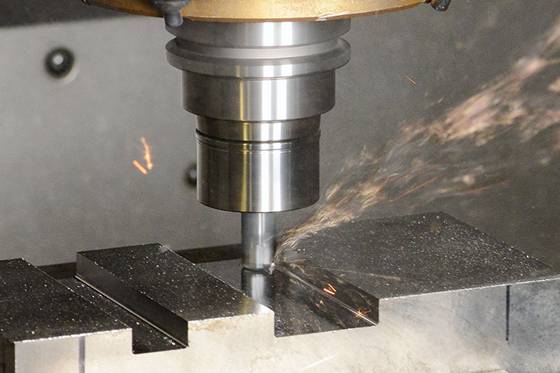
High Versatility
Milling operations are some of the most versatile machining processes with superior flexibility. For example, end milling is ideal for several applications, such as contouring, profiling, tracing, plunging, etc.
High Precision and Accuracy
Like any typical CNC machining process, the end milling process is guided and regulated by computer codes and programs. Therefore, the cuts have enhanced precision and accuracy, which are crucial for parts with strict tolerance requirements.
Vast Range of Materials
End milling is suitable for an extensive array of materials – metals, like aluminum and steel; non-metals, like wood and plastics; and even composites. Any solid material is fit for end milling operations.
Quick and Efficient Process
These machines just require the operators to input the codes needed to run the process; then, it carries on with its cutting. The reduced human interference ensures reduced error, thereby increasing the efficiency of the process.
In addition, the process is highly automated and can run continuously for extended hours, ensuring that product fabrication is hastened. With CNC millers, manufacturers can create parts within hours instead of days or weeks using conventional machines.
Suitable for Complex Fabrication
End milling is suitable for fabricating complex structures with high tolerance specifications. They manufacture dies, slots, shoulders, housing, and other machine parts.
Differences Between End Milling vs Drilling
Here are the main differences between both machining processes.
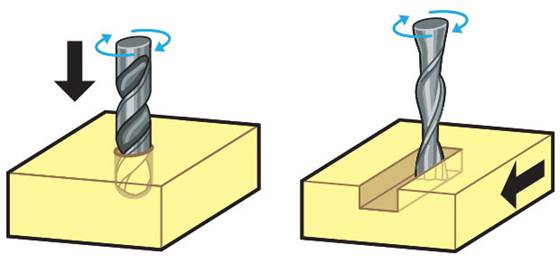
●While end milling is suitable for vast applications, such as machining slots, contours, profiles, cavities, etc., drilling typically creates holes in a workpiece.
●End milling uses millers that can cut in either direction; the end mills make axial and lateral cuts. Drilling involves using the drill bit to plunge into a material, leaving a precise hole.
Since both processes require special cutting tools, let’s also examine the differences between the cutters.
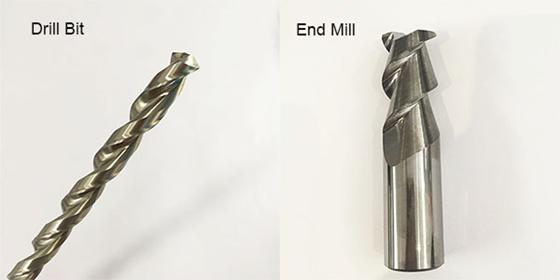
Drill Bits vs End Mills
●Observing the tips of drill bits, you’d notice their conical shape, except for diamond drills with flat tips. On the other hand, end mills may come in different forms depending on their specifications. The choice of end mills is usually based on fabrication requirements and working materials.
●While drill bits have their prominent cutting teeth tapered towards the cutting tips, the primary cutting edges of end mills are on their periphery (sides), with others on their tips.
●Indeed, end mills are capable of machining a hole. However, unlike drill bits that can create holes in a workpiece, end mills require a predrilled hole.
●End mills can generate flat surface cuts because of peripheral cutting, while drill bits can only cut vertically, creating cylindrical or conical cuts in the form of a hole.
WayKen: Your Partner for Various Milling Operations
Beyond knowing you require end milling services, it is vital to partner with a top-notch service provider – WayKen, as these machines are often expensive. Therefore, you get to save costs yet provide the best outcome for your manufacturing needs.
WayKen is an expert at providing CNC milling services and other machining operations. Our in-house machine shop comprises highly skilled engineers with vast experience in machining. Also, we offer a wide range of machining services, including precision machining, CNC turning, metal & plastic machining, 3D printing, rapid injection molding, surface finishing, etc.
Simply contact us to get an instant quotation and DfM analysis.
Conclusion
End milling is a highly versatile manufacturing process with vast applications, especially for face milling, profile milling, and plunging. Like most computer-controlled processes, it is highly precise, producing products with high dimensional accuracy, making it valuable in creating machine parts.
Having read through this article, you should have enough knowledge of this machining process and how to utilize it for your fabrications. Do not hesitate to contact WayKen for your end milling services.
FAQs
What are the main differences between end milling and face milling?
The main difference between these two milling processes is in the cutting device. Face mills have a fine circular design with cutting teeth for horizontal cutting. While end mills, which are usually screw-like, have cutting teeth on the face and sides, which permits end cutting and peripheral cutting.
Can you drill with end mill?
End mills are suitable for drilling holes into a workpiece. For example, center-cutting end mills can cut straight down into a material, producing holes in such parts. However, for applications that require precisely drilled holes, you need to use a drill bit and reamer.
Why is an end mill called an end mill?
End milling differs from other CNC processes because of its unique cutting tool. The end mills contain cutting teeth on the sides and the end of the mill; hence its name – end mills.

